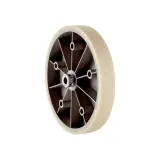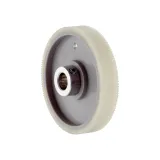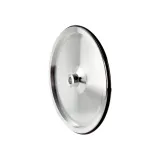SICK Measuring instruments





sick measuring instruments for commissioning and maintenance
SICK covers the handheld and bench gear engineers actually use on real lines: electrical, thermal, pressure/flow, motion, and network diagnostics that survive drops, noise, and tight cabinets. Housings are shock-resistant with clear, high-contrast displays; leads and probes fit through dense wiring without stressing terminations. Typical operating envelopes are −10…+50 °C with IP40–IP54 protection; CAT III/CAT IV ratings are available where mains measurements are required. Logged data moves over USB-C or Bluetooth so fault traces end up in the CMMS instead of notebooks.
sick industrial measuring devices domains and form factors
Expect true-RMS multimeters and clamps (with inrush and low-impedance modes), loop sources/sinks for 4–20 mA with 24 V loop power, 500/1000 V insulation testers with PI/DAR, portable oscilloscopes for 24 V rails, thermography spots for heater and drive checks, tachometers/encoder testers for motion, handheld manometers/anemometers for cabinet ventilation, and wire-map/certification tools for industrial Ethernet. Rugged holsters carry fused leads, crocodile clips, needle tips, and GS38-style shrouds; magnets and hook straps free both hands in MCC rooms.
sick precision instruments specifications and accuracy classes
Electrical accuracy typically lands at ±0.05…0.5 % on DC voltage, ±0.5…1.5 % on AC true-RMS; loop sources resolve 0.02 mA with programmable step/ramp; insulation ranges to 1 GΩ with guard terminals; clamps offer 1 kHz bandwidth for drives plus peak capture. Environmental instruments specify compensated ranges and logging cadence, while optical alignment kits publish spot size and divergence for photoelectric setup. Safety and EMC reference IEC 61010-1/-2-030 and EN 61326-1; overvoltage category and pollution degree are printed on the front so site acceptance teams don’t guess.
Technical characteristics and integration notes
- Input protection and fusing: high-energy HRC fuses on current jacks; MOV/PTC front-ends on voltage ranges.
- Filtering: selectable LoZ to collapse ghost voltages on long runs; smoothing for PWM-rich VFD cabinets.
- Time bases: min/max/peak with date-time stamps for correlation against PLC alarms; some models sync to NTP via a companion app.
- Interfaces: banana, minigrabber, thermocouple (K/J) and Pt100/385 Ω; encoder testers accept HTL/TTL and SSI/BiSS.
- Network: copper certifiers validate Cat5e/6/6A channels with PoE load testing; optical kits measure insertion/return loss on OM3/OM4 and OS2 spines.
sick diagnostic instruments use cases across plants
Commissioning crews prove 24 V rails under inrush, sweep analog inputs with a stepped loop, and verify encoder direction before tying into the PLC. Maintenance teams trend motor currents for bearing wear, check delta-T across enclosures, and catch sag/swell or harmonic issues when a shared feeder misbehaves. Safety technicians validate E-stop loop integrity and EDM timing after contactor changes, then export signed PDFs for the audit pack. Quality engineers confirm heat-tunnel windows, cabinet airflow, and illuminance at QA benches without dragging in lab gear.
Applications and compatibility
Packaging lines: fork/label sensor alignment with laser targets, fast presence verification across infeed gaps, and encoder phase checks on conveyors. Intralogistics: PoE verification for cameras and APs, pallet bay height via ToF verification, and long-run copper certification to floor switches. Food & beverage: IP-aware handhelds that survive washdowns (used outside splash) and temperature logging for CIP traces. Machine tool and wood: immunity to dust and magnetic fields; insulation tests after coolant clean-outs. Every instrument maps cleanly to PLC-agnostic workflows: discrete I/O checks, IO-Link parameter cloning on bench, and CSV exports that match timestamped SCADA events.
Technical practice that prevents rework
Use LoZ when ghost voltages confuse fault-finding; apply guarded insulation tests to avoid back-feeding electronics; place emissivity stickers on shiny busbars before IR readings; let pressure probes settle after zeroing; and keep untwist length tight at copper jacks when certifying 10G. For VFD cabinets, prefer clamps with low-frequency response and crest-factor handling—cheap meters under-read. Where measurement uncertainty matters, record instrument class and interval in the FAT/SAT so repeatability survives personnel changes.
Selection criteria for B2B buyers
Start with environment (CAT class, IP, temperature), then pick ranges and accuracy that match your tolerances. For electrical teams, prioritize sick electronic meters with fused current inputs, fast continuity (<10 ms beep), and inrush capture. Controls engineers benefit from scope-meters and loop sources that script step/ramp profiles, plus encoder testers covering both incremental and serial protocols. Maintenance will want logging thermals and clamp meters with harmonic content. If traceability is audited, include sick calibration tools and fix annual or 24-month intervals based on usage and shock history. For mixed sites, standardize chargers, batteries, and fuse types across the fleet to cut downtime.
Integration with other SICK products
Loop calibrators and IO-Link masters make a quick bench: prove analog spans before wiring; clone parameters to spare sensors without re-teaching at height. Optical alignment kits reduce photoelectric false trips after cleaning, and encoder testers validate direction/index timing before the drive sees a shaft. When pairing with SICK installation hardware, use 360° shield clamps at entry plates and keep sensor looms away from VFD tails; your logs will show cleaner margins immediately.
Ordering and kitting
Build discipline-specific cases: electrical (true-RMS meter, clamp, leads, insulated drivers), motion (tachometer, encoder tester, magnets), thermal/air (IR spot, contact probe, vane anemometer, manometer), and networks (copper certifier, optical power meter, cleaning sticks). Add probe sets, spare fuses, and asset labels. When specifying sick measurement tools on tenders, tie each instrument to a commissioning method statement—crews waste less time figuring out what to bring. For periodic QA, keep a single reference meter in the lab and rotate field units through it between external calibrations.
Advantages of working with Bankoflamps
We align instrument lists to your commissioning plan and expose live EU stock before windows are booked. Quotations typically return in about an hour with EAN/MPN so ranges, CAT classes, probe sets, and logging options don’t drift mid-phase. Your portal shows lead times, shipment status, and downloadable price files; pricing validity tracks project gates. Approved clients can use post-payment up to 30 days. We consolidate by crew or area to cut freight and bench time, and your account manager cross-checks measurement domains, accuracy class, accessory kits, calibration intervals, and carry solutions against your method statements—so cases land site-ready and teams start measuring, not chasing parts.